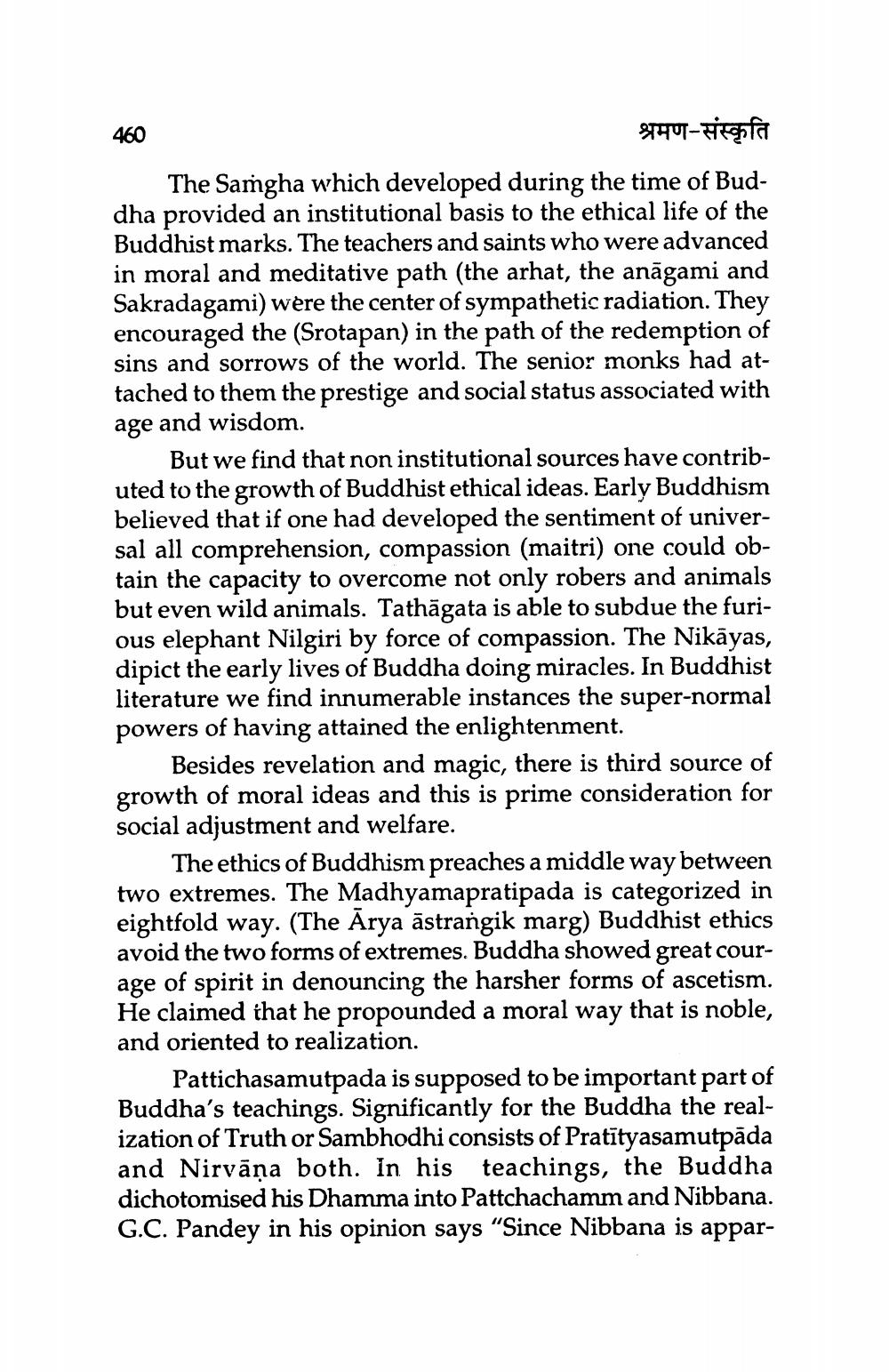________________
460
श्रमण-संस्कृति
The Samgha which developed during the time of Buddha provided an institutional basis to the ethical life of the Buddhist marks. The teachers and saints who were advanced in moral and meditative path (the arhat, the anāgami and Sakradagami) were the center of sympathetic radiation. They encouraged the (Srotapan) in the path of the redemption of sins and sorrows of the world. The senior monks had attached to them the prestige and social status associated with age and wisdom.
But we find that non institutional sources have contributed to the growth of Buddhist ethical ideas. Early Buddhism believed that if one had developed the sentiment of universal all comprehension, compassion (maitri) one could obtain the capacity to overcome not only robers and animals but even wild animals. Tathāgata is able to subdue the furious elephant Nilgiri by force of compassion. The Nikāyas, dipict the early lives of Buddha doing miracles. In Buddhist literature we find innumerable instances the super-normal powers of having attained the enlightenment.
Besides revelation and magic, there is third source of growth of moral ideas and this is prime consideration for social adjustment and welfare.
The ethics of Buddhism preaches a middle way between two extremes. The Madhyamapratipada is categorized in eightfold way. (The Arya āstrangik marg) Buddhist ethics avoid the two forms of extremes. Buddha showed great courage of spirit in denouncing the harsher forms of ascetism. He claimed that he propounded a moral way that is noble, and oriented to realization.
Pattichasamutpada is supposed to be important part of Buddha's teachings. Significantly for the Buddha the realization of Truth or Sambhodhi consists of Pratītyasamutpāda and Nirvāṇa both. In his teachings, the Buddha dichotomised his Dhamma into Pattchachamm and Nibbana. G.C. Pandey in his opinion says "Since Nibbana is appar




